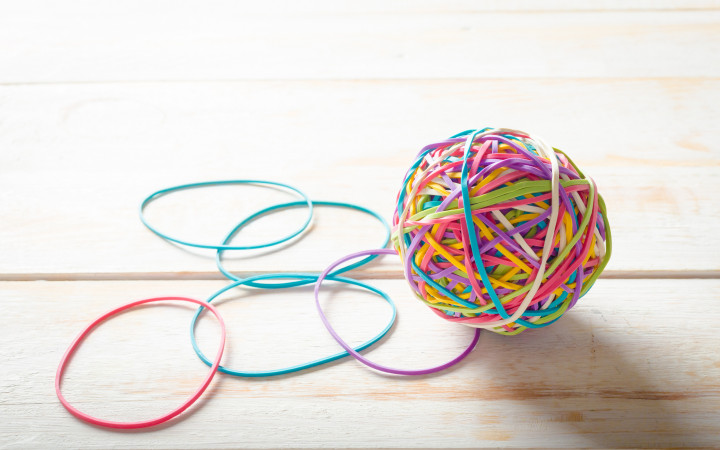Today’s Wonder of the Day was inspired by Sarah from Aledo, TX. Sarah Wonders, “How do they make rubber bands?” Thanks for WONDERing with us, Sarah!
Have you ever noticed how many uses rubber bands have? They’re some of the handiest supplies around. They can hold your hair back. They might stop your glasses from falling off. They can be a storage system, a pencil grip, or even an eraser! Yes, rubber bands are pretty useful. But have you ever WONDERed how they were invented?
The story of these stretchy, bouncy, durable bands goes back thousands of years. Experts believe it began in the regions that many today call Mexico and Central America. There, ancient civilizations harvested latex from rubber trees. To make this material less brittle, they mixed it with juice from morning glory vines.
This blend was easier to shape. It was also strong and waterproof. The Mayas, Olmecs, and Aztecs all used this rubber to make everyday items like shoes. They also turned it into balls for their sporting events.
Early European explorers to the Americas were intrigued by these creations. They’d never seen rubber before. Many of them took rubber goods from the Americas back to Europe. However, it would be many years before they learned to make usable rubber of their own.
Thomas Hancock made the first known rubber band in England in 1843. He did so by slicing a rubber bottle from the Americas into bands. Hancock’s invention wasn’t as stretchy or bouncy as today’s rubber bands. In 1845, Thomas Perry improved the creation through a process called vulcanization.
An American, Charles Goodyear, developed vulcanization in 1839. The process involves heating rubber and sulfur. This creates a more durable and usable form of the material.
The contributions of all three inventors led to the rubber bands we use today. They’re still made in much the same way. They start as long rubber tubes, which are then heated and pressurized. Finally, the tube is cut into bands. After being washed and dried, the rubber bands are ready to hit the shelves!
How have you used rubber bands? Maybe they’ve helped you open a jar or tie dye a shirt. Perhaps you’ve turned hundreds of rubber bands into a rubber band ball! Odds are, they’ve helped you out in more than one way. Where would the world be without this WONDERful invention?
Standards: CCRA.L.1, CCRA.L.2, CCRA.L.3, CCRA.L.6, CCRA.R.1, CCRA.R.2, CCRA.R.4, CCRA.R.10, CCRA.SL.1, CCRA.SL.2, CCRA.W.2, CCRA.W.9,




